Scottish Mummies and What's Happening in August
I want to keep today’s newsletter short and sweet.
I have been working with my editors, Willow Little and Devon Gallant, on Pilgrimages. It’s been a combination of addressing copyedits and rethinking and repositioning certain poems, and deciding which poems, if any, should be removed to create a more streamlined collection.
The edits are prompting me to think a little more about my audience and to take my ideas further.
The last few weeks I took off as a kind of vacation but took the opportunity to hang out with friends and catch a few flicks at Fantasia, the greatest genre film festival in North America, right here in Montreal. Nothing especially jumped out at me as must-see film this year (at least for me), but I did enjoy a series of short films about death and grief at the Cinema du Musée.
I also completed a new short story that I am presently sending out on submission.
Stories behind the poems:
“Cladh Hallan”
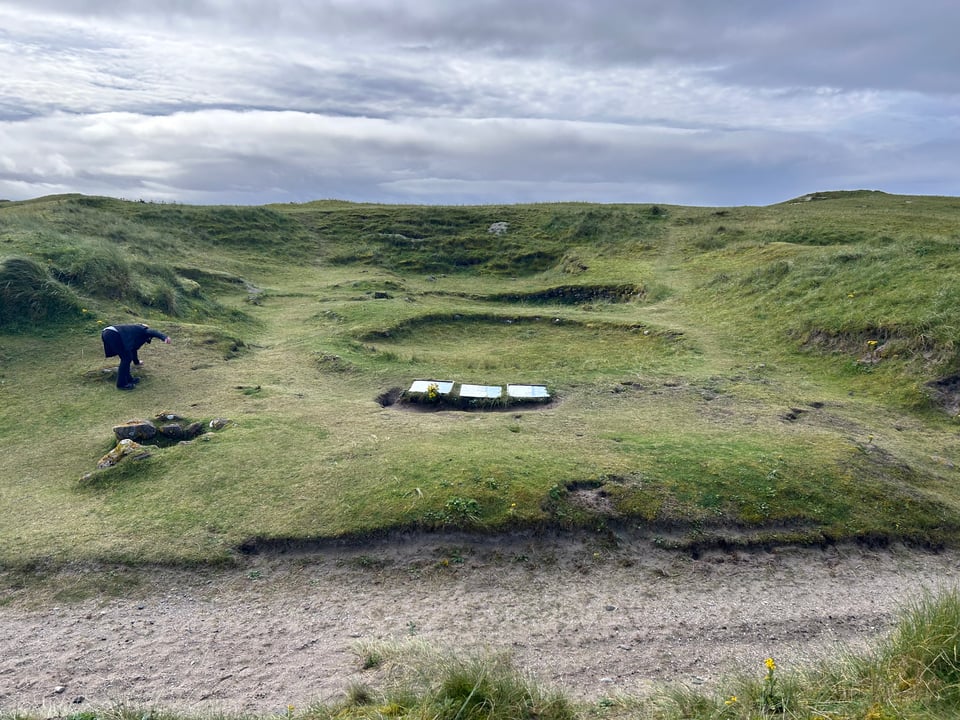
If South Uist had its own version of Brendan Fraser’s The Mummy, it would be set at Cladh Hallan.
An archaeological site whose Scottish Gaelic name means “burying place,” Cladh Hallan is set in a sand dune landscape on the western coast of the island. (Sand dunes that abound with far more rabbits than scorpions!) Instead of a pyramid, the four Cladh Hallan mummies were buried beneath seven conical-roofed roundhouses, Bronze Age dwellings that probably featured turf roofs.
At three thousand years old, the site predates Cleopatra by over a thousand years and is only about one to two hundred years older than Rameses II. It remains the only place in the U.K. where prehistoric mummies have been discovered.
According to the app Uist Unearthed (an augmented reality app I highly recommend), Cladh Hallan was originally a cremation cemetery. Only hundreds of years later around 1100 BC did people start living on the spot. It is very likely they chose the area for its sacred significance as a cremation ground.
When they moved in, they followed a strange practice when treating certain important family members: they preserved the body in a bog, then kept the body in their homes for hundreds of years before finally burying it under the house. It is believed the residents of Cladh Hallan viewed the body of an ancestor as having religious significance of some kind. They likely lived day-to-day with the corpse of their distant ancestor nearby. When they did bury their dead, it was likely out of respect when the peat-preserved corpse began to disarticulate.
Alistair Moffat in Before Scotland says “these bodies were seen as part of a community and their families probably communicated with them regularly“ (79). In a sense, the mummies were not dead to their families but part of the household. Ancient peoples were highly connected to the land in which their ancestors were buried, and even in the more recent times the traces of this deep connection to land remain: the Scottish Gaelic word “ionndrain,” like the Welsh “hiraeth,” means loss, longing “or even something irretrievably missing” (81), a word that cannot be directly translated in English.
Some lurid details I love pointing out: isotopic dating reveals that two mummies discovered at Cladh Hallan were actually composites of several individuals! The male mummy’s body, skull, and lower jaw likely came from different individuals born centuries apart, while the female’s jaw, arm bone, and thigh bones also came from different sources (“The ‘Franken Mummies’ of Scotland”, Strange Remains; “The mummies of Cladh Hallan,” Going Postal). For some reason, two of the female mummy’s teeth were also buried in her palms. It’s unknown why they were buried this way or even if such burials were typical of the ancient world at this time, though an interesting theory states that assembling composite mummies may have been a way of asserting land rights through ancestral inheritance.
It’s tempting to see Cladh Hallan as a window into where my ancestors might have come from three thousand years ago, were I to trace my descent through my mom’s side that far into the past. After all, these were some of the earliest inhabitants of South Uist, and my most distant Scottish ancestors, John Macaulay and Catherine MacIntyre, were born on Benbecula and South Uist respectively in the 1700s. Could my descent stretch back that far? The idea is certainly tempting, but reality could be a lot more complex.
One thing is certain, and that’s that Cladh Hallan provides a window into a very different world, where the cycles of the seasons, death, and life were treated much differently than today.
Notably, the site is somewhat at risk of damage from the rabbit burrows in the sandy, grassy area. When I visited last August with my third cousin Catriona and her granddaughter Sophia, the burrows on the path to the site were plentiful and deep. If they did film a Mummy movie at Cladh Hallan today, I’m not sure what they would make of the rabbits!
My poem about this archaeological site, “Cladh Hallan,” will appear in Pilgrimages in September.
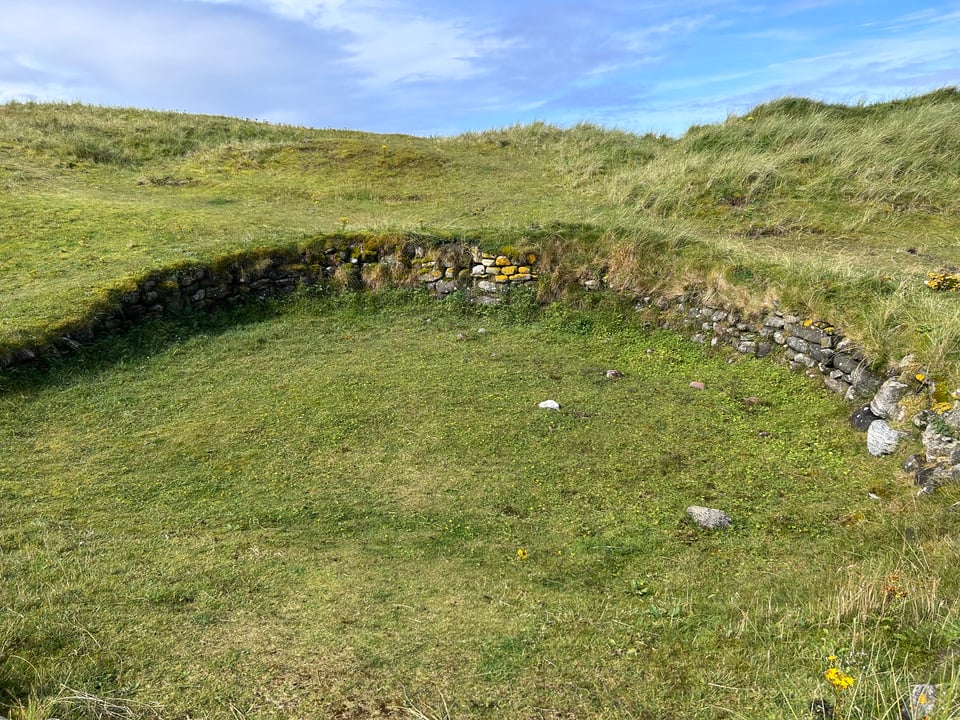
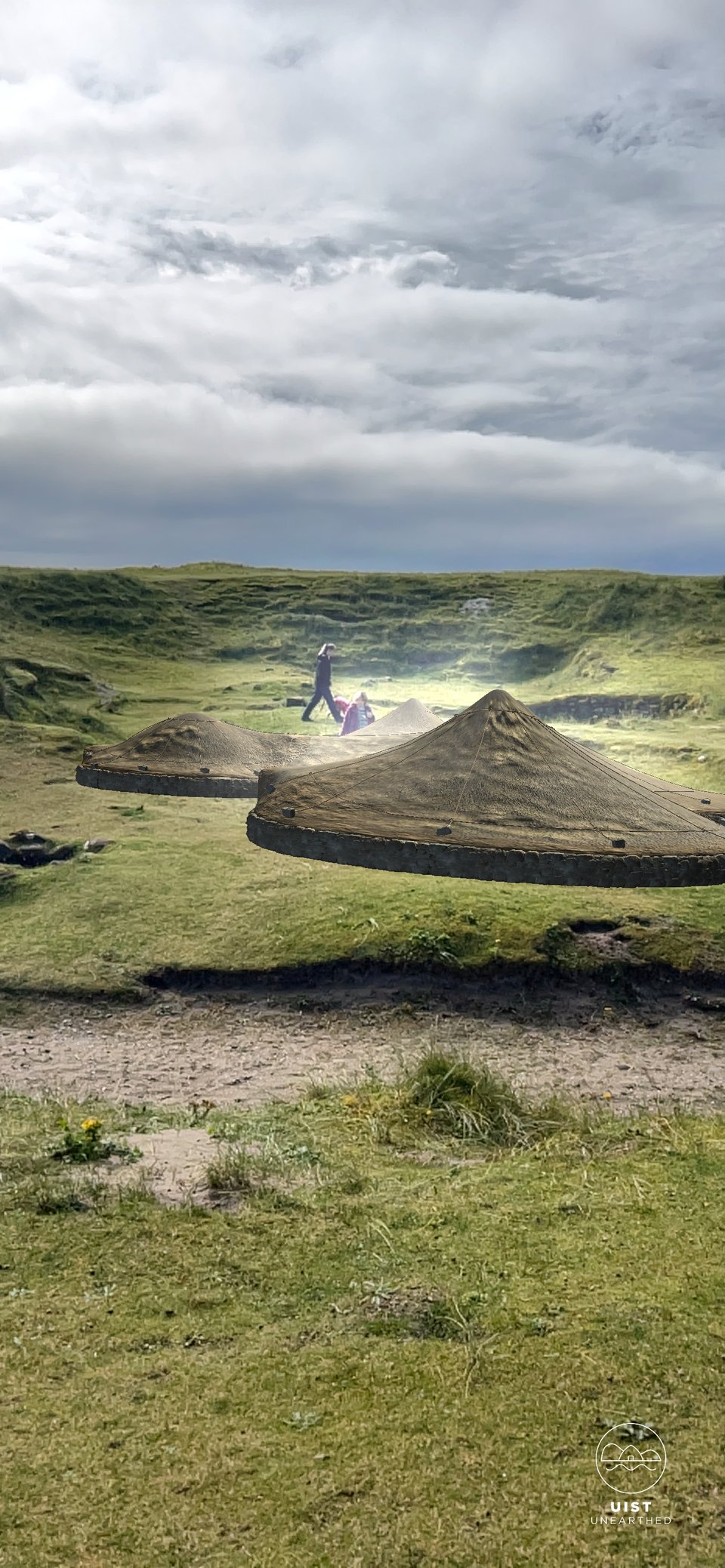
Appearance: August 17rd
I will be reading “Cladh Hallan” at the Accent Open Mic on August 17th at La Marche à Côté. The event begins at 8pm. Note that these open mics have a tendency to go past 11pm.
Archaeology of Weird Fiction Challenge
Every Monday I post a new reflection on a weird tale in Ann and Jeff VanderMeer’s The Weird: A Compendium of Strange and Dark Stories.
You can follow me on my journey through weird fiction by reading along to the free texts linked below. I also advise buying the anthology from a local bookstore if you can!
Last week’s story was “The Diane Arbus Suicide Portfolio” by Marc Laidlaw. Diane Arbus was a famous American photographer whose ghostly black-and-white portraits inspired David Lynch. She tragically lost her life to suicide. This story, in which the subjects of her photographs come to life and haunt a police photographer, is Laidlaw’s tribute to Arbus and her work.
You can read “The Diane Arbus Suicide Portfolio” for free here and my blog post here.
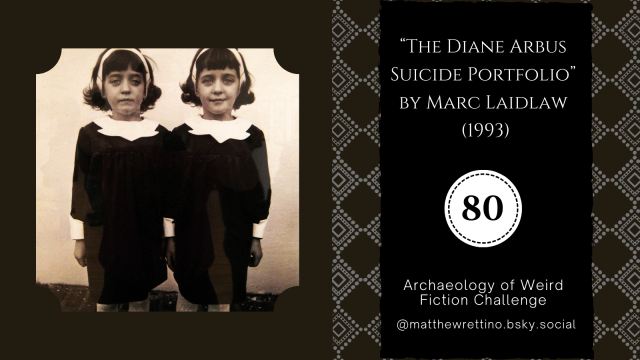
Releasing today, “The Country Doctor” by Steve Utley is about a doc from an isolated, rural town, who might have more going on with him than just an ordinary practice.
You can read “The Country Doctor” for free here and my blog post here.
I actually forgot about this connection until just now—but “The Country Doctor” also revolves around a graveyard excavation. So there’s a thematic connection with today’s Cladh Hallan story!
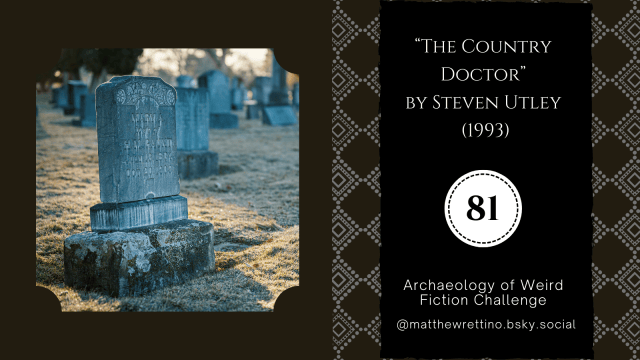
Next Monday, I will be writing about “Last Rights and Resurrections” by Martin Simpson, a story about a man who speaks to dead animals, including deer hit by cars and pets that pass away, allowing them to depart in peace. Keep your tissues close at hand for this one. I’m even getting misty-eyed writing this summary.
You can read “Last Rites and Resurrections” for free on Simpson’s website. All of my #WeirdFictionChallenge posts appear Monday on my blog at 1pm.
Writing Prompt
A rabbit burrows underground and into the burial site of a bog-preserved mummy. What does the little hopper with the nibbly teeth do?